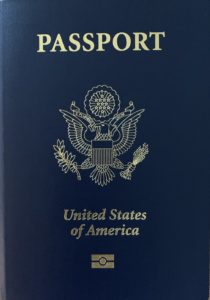
This month we are addressing some new rules that might affect you and your dog if you are planning to travel. For local or interstate travel (excepting travel to Hawaii) we’ll share some tips below to help you plan your trip and enjoy your adventure with your pet. First, we want to draw attention to new regulations that will be effective AUGUST 1, 2024 for dogs who travel outside the United States borders and plan to return.
The CDC had put moratoriums on dogs coming into the United States from High-Risk Countries for several years, and more recently updated the requirements for ALL DOGS arriving at the border.
Depending on where you have traveled, every dog owner will need to follow specific rules, before the dogs will be allowed back into the United States. The rules vary based on several criteria:
- Is your dog older than 6 months of age – yes or no? – Dogs under 6 months of age cannot enter the United States
- Was your dog vaccinated in the United States – yes or no? – If yes, then travel back into the United States is easier as long as their Rabies vaccine is still current
- Did you travel to a Low-Risk of Rabies Free Country – yes or no? – If yes, then you must complete the Dog Import Form online before re-entry, and keep your receipt to present at the border
- Did you and your dog travel to or through a High-Risk Country – yes or no? – If yes, then there are additional requirements you must comply with for re-entry
- Is your dog’s Rabies vaccine still current at the time you are entering into the United States – yes or no? – If no, your dog cannot re-enter the United States; there are additional requirements that must be met
- Does your dog have a Microchip, and more importantly, an ISO Compatible Microchip – yes or no? – A microchip is a permanent way of identifying your dog and matching the vaccination history or health certificate to the specific patient. ISO microchips are the international standard, and many countries require an ISO chip for your dog to enter. ISO chips must be implanted before the Rabies vaccination(s).
There are multiple brands of microchips, and a National Registry, sponsored by AAHA, AAHA Microchip Look Up. If your pet has a microchip, ensure that their chip is registered with at least one database as that is the only way your pet can get re-united with you if they are lost or stolen. Our HomeAgain microchips are ISO compatible, and they read the patient’s body temperature when scanning. This is a side benefit and appreciated by many cats and dogs!
ISO microchips have 15 digits (left) Microchips are implanted over the shoulder blades Non-ISO microchips have less than 15 digits (right)
The Centers for Disease Control and Prevention (CDC), is tasked with ensuring the health and safety of people. In that regard, they track diseases, disease transmission, and also any animals that might be carriers of those diseases. One of the most important is Rabies, an almost always, fatal disease for any animal that contracts the virus. Vaccination against the Rabies virus has been shown to be nearly 100% effective, and vaccination of dogs is required by law. In 2007, one specific Rabies virus variant, the Dog-Maintained Rabies Virus Variant (DMRVV), was eradicated from the United States, which means that Rabies is no longer endemic in our dog population.
There are however, over 100 countries globally where a substantial number of dogs are unvaccinated for Rabies and may be carrying Rabies. The incubation period for Rabies can be variable but often symptoms show within 1-3 months of exposure. Therefore, dogs from High-Risk countries pose a risk of transmitting Rabies before they are showing symptoms, and it is the importation of these dogs that the United States is trying to prevent.
If your dog has been vaccinated in the United States, is older than 6 months of age, has a microchip and has only traveled to a Low-Risk or Rabies Free Country, then in order to get back into the United States at the end of your trip, you will need to complete the CDC Dog Import Form and get your receipt to show at the border.
The form is completed by the person bringing the dog across the border. Each dog needs their own receipt, and each receipt is valid for 6 months. So, people who traveling frequently, say to and from Canada, only need to complete the document twice yearly.
- CDC Dog Import Form Instructions
- CDC Dog Import Form for Owners to Complete
- CDC Importing Dogs from RABIES FREE or LOW-RISK COUNTRIES
If you traveled to a High-Risk Country and your dog was vaccinated in the United States, your requirements are a little different – check out the link below.
If you are coming from a High-Risk Country, then your veterinarian in your country of departure will need to complete all travel documentation to ensure you will be allowed into the United States.
TRAVEL ADVICE
If you are planning on traveling to another country with your pet, it is essential to start planning months, sometimes as much as a year or more, in advance. We have accredited veterinarians on staff and Hawthorne Hills Veterinary Hospital can help you navigate the regulations and help ensure your travel or move is successful. Travel to Canada and Mexico is relatively easy as long as your pet is in good health.
General Tips for Travel in the United States or Internationally :
- Ensure your pet is a good traveler and get them comfortable in a travel crate months in advance. Travelling can be stressful for everyone, including your pet.
- Ensure your pet is microchipped, and if travelling overseas or to Hawaii, your pet must have an ISO Compatible chip AVMA Microchip FAQs and ISO Compatibility
- Review the requirements of your destination country and any countries you might be transiting or visiting so that you have an idea of what may be needed.
- Contact your veterinarian early – they will do their own review and set a timeline for what needs to be done when. Some requirements are quite specific and must be completed in the correct order. Many documents must be Endorsed by APHIS USDA which requires your veterinarian to be accredited, and timelines can be tight.
- Review your pet’s health, vaccination status, medications, or other needs with your veterinarian. Some pets may not be able to travel, and some breeds are banned from some countries.
- Plan for any pet emergencies that might occur – do you know where veterinary services are in the area you are traveling? Have you confirmed your hotel or camp area is pet friendly?
- Finally, do you have a back up plan for your pet if your health, or your pet’s health changes in the intervening time?
 https://www.akc.org/expert-advice/travel/complete-guide-to-traveling-with-your-dog/
https://www.akc.org/expert-advice/travel/complete-guide-to-traveling-with-your-dog/
https://www.aspca.org/pet-care/general-pet-care/travel-safety-tips




